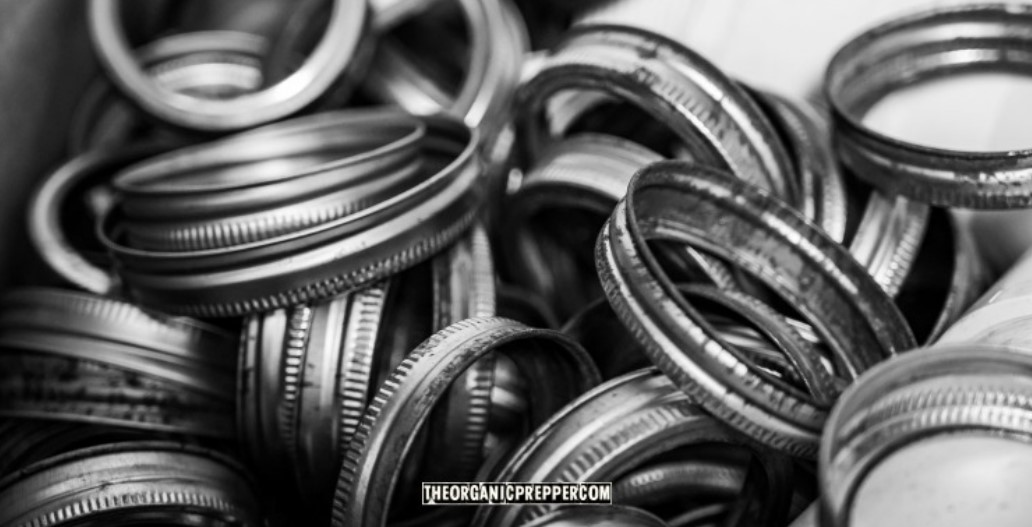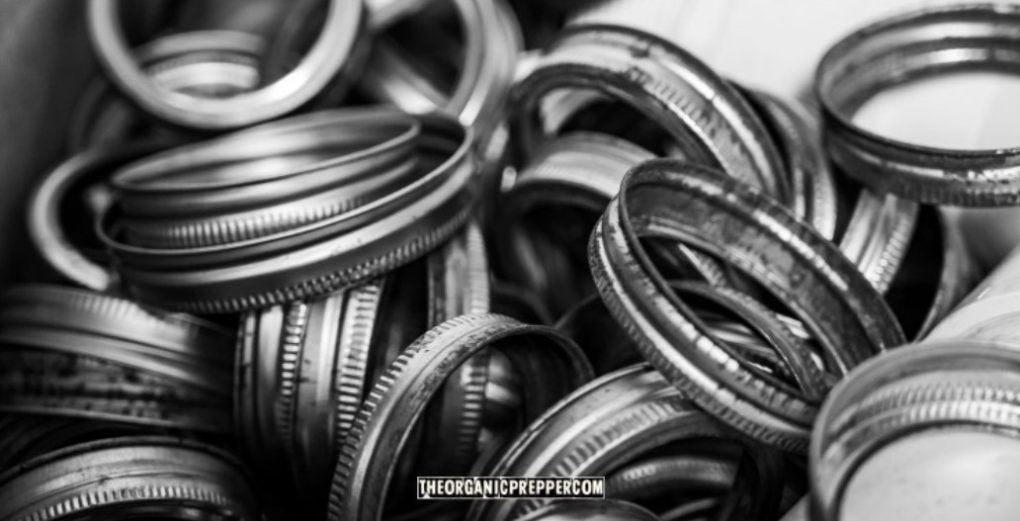Canning and the Four Levels of Disaster: Are You Prepared?
 By Colette
By Colette
Using the four levels of disasters introduced in an earlier OP article, I will take a close look at canning as a method of food preservation. Exactly how does canning and the four levels of disaster mesh? For each level of disaster, I make the distinction between canning as a preparation for a disaster compared to canning as an activity to support your survival during a disaster.
Level 1: Personal emergencies and canning
The first level of disaster is at the personal and household level. As Daisy writes, “it’s quite often about money or the lack thereof. This can occur for all different reasons. Some examples are job loss, a costly medical expense, or a car repair bill.” I would add to these the loss of a spouse, a serious illness, or any other kind of temporary disability that affects your ability to work.
When money is suddenly reduced, canning is a preparation. If you have created a substantial pantry with your own canning skills, then your pantry is like a bank account. It is a meaningful asset that you can mindfully withdraw from in this time of need. You can eat. You can put what financial resources you have to other needs, such as paying rent or mortgage.
The second way that canning can support your household during a Level 1 Disaster is as an activity to generate income. Can you access fresh fruit and sugar at reasonable prices? You could make preserves and jam to sell online or through word of mouth. Is it harvest time, with local fruit trees producing? You may be able to access free apples, as I have, to produce applesauce and canned apples.
Level 2: Short-term situations and canning
The second level of disaster comes from outside your household and often involves a challenge to basic needs in some way (e.g., food/water/power supply). What is important to notice about a Level 2 Disaster is that you will need to muster your preps and energy to deal with the disaster. At this point, you either have your cans, or you don’t. You may be stuck in your house for a couple of days in a snowstorm. It may be summer, and you have no power. You don’t have any water. This is not likely the best time to break out your pressure canner!
(For information on how to survive a winter storm, make sure you check out our free QUICKSTART Guide.)
Depending on the nature of this short-term disaster, your ability to access the supply chain could be limited for this short period of time, AND you could be without power. So, when you do can in the future, it is worthwhile to consider canning foods that are edible/palatable if there is no power available for cooking, or cooking is very difficult. On Daisy’s list of the best foods to eat when there is no power, there are some that can be home canned, such as fruit juice and fruits. I would also consider pressure canning baked beans, which are a good protein source and aren’t too bad cold (in my modest opinion).
So, when facing a Level 2 Disaster, you either have your cans, or you don’t. Canning, in this case, is a resource for your household’s survival only if you have prepared in advance.
Level 3: Man-made and natural disasters and canning
With this level of disaster, rather than inconvenience, comes danger, larger-scale destruction, and potential loss of life. Some are sudden natural disasters with little warnings, such as severe earthquakes. Some have a bit more warning, such as an ice storm. Still, some are man-made disasters, such as chemical spills or nuclear accidents, or attacks.
This level of disaster could destroy your home or make your current neighborhood unsafe. In this case, you will lose your canned food in your pantry and/or be forced to evacuate. However, should your home still be a valid retreat option and your cans intact, basic needs in your neighborhood could be some time in returning. In this scenario, having a well-stocked pantry could be a support to feed your family and redirect financial resources to any rebuilding efforts that may be required.
Off-Grid Survival Toolkit (Ad)
In the longer term, even during likely supply chain disruptions, if your canning supplies are well-stocked, you may be able to use canning to preserve low-cost/easy to access produce. Be aware: water bath canning requires either lemon juice or citric acid to safely can low acid foods (this includes tomatoes and most vegetables).
I keep a five-pound bag of citric acid in my supply cupboard at all times. It will meet my tomato canning needs for up to 40 years. What are your resources for canning if supply chains are interrupted: Jars? Lids? Food safety for low acid foods?
Level 4: A SHTF event and canning
The nature of the SHTF event will determine whether canning is even possible. For example, if you are in an intense life-threatening situation, such as a civil war, your focus may be more on survival and basic needs. If access to clean water and severe food shortages are your challenges, all in an urban area where snipers and bombing are the norms, canning may not be possible. You may be more concerned with how to safely and quickly dispose of the human waste your small community produces.
However, in a more slow-burning SHTF, such as a financial collapse or epic grid failure (e.g., from a solar flare), canning could be a big win for you. In these scenarios, the long-term nature of the disaster will be your challenge. How long will your canning supplies last without any source to replace them?
No supply chain: The SHTF event and canning
Yes, that’s a great pressure canner you own, however, post-SHTF there will be no way to test the pressure gauge each year. How long will you trust it? Or do you have the equipment to test it yourself? How long will that continue working? My weight-operated pressure canner recommends that the sealing gasket be replaced every year. How many of those gaskets do you have on hand?

In a very long-term situation, what if you run out of gaskets for your pressure canner and can no longer use it? You have also run out of citric acid and lemon juice, which is no longer available. Do you know how to make your own vinegar, which would allow you to pickle and can some vegetables safely in your water bath canner? Honey is a substitute for the sugar in this recipe. If you don’t keep your own bees, you may be able to trade for the small amount of honey required.
“OK,” you say, “I have years of supplies for my pressure canner in place.”
But, in a grid-down scenario, are you prepared to gain the skills necessary to operate your canner safely over an open fire? This requires tenacity (if you lose temperature, you have to restart the process again), and you need a way to regulate the temperature from the fire. It is likely going to be much easier to build this and practice before SHTF than after. Here are some tips from people who have tried both water bath canning and pressure canning successfully over an open fire.
When it comes to canning and the four levels of disaster, you “CAN” do it!
Canning can be both a preparation and an activity to support your survival, depending on the context. However, proper planning is essential. Canning preparedness requires careful reflection on your equipment and supply needs in all possible scenarios.
I hope this article has gotten you thinking about how canning fits into your own preparations for the four levels of disasters. What equipment do you own for canning? What are your must-have supplies? How many years are you prepared to go? Can you see yourself acting on any of the information you read here in the article? Do you have any recommendations to share with others? Please let us know in the comments below.
Source: The Organic Prepper
Colette is passionate about sharing her knowledge of thrifty living and self-sufficiency. She has developed her skills in self-reliance living in the suburbs, the city, and more recently, on her own Half-Acre Homestead. Colette lived five years completely off-grid and without running water in an eight by 24 foot tiny home while designing and building her own 18 by 24-foot eco-cabin. She has just launched her website, Half Acre Homestead. Colette invites you to stop by and visit this work in progress! Coming soon in 2022 is her exciting new online program. Interested in Resiliency, Preventative Health, and Self-Sufficient/Off-Grid Housing (to name a few!)? Stay tuned for more details!



